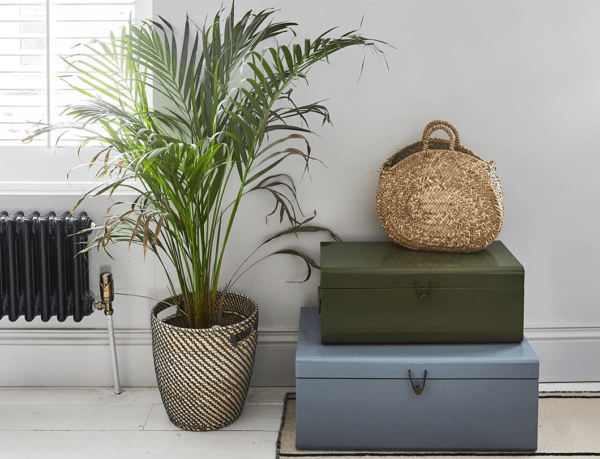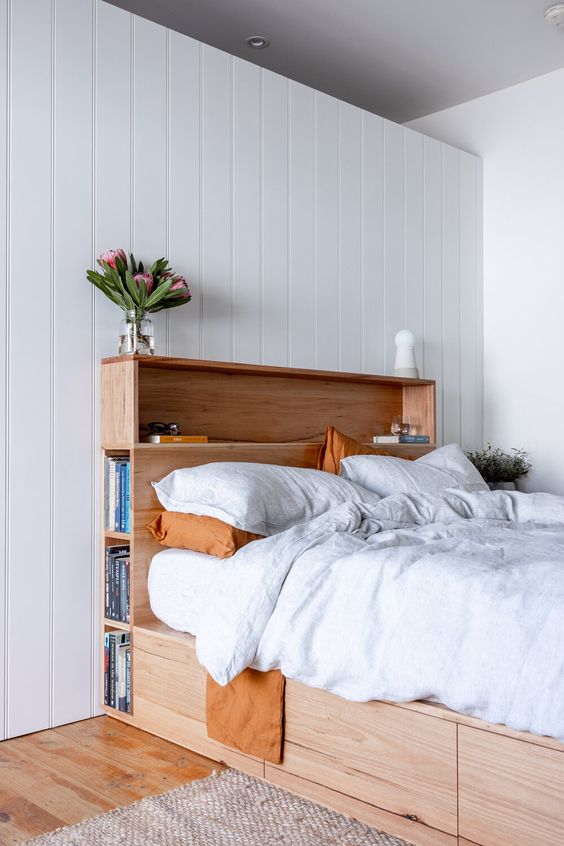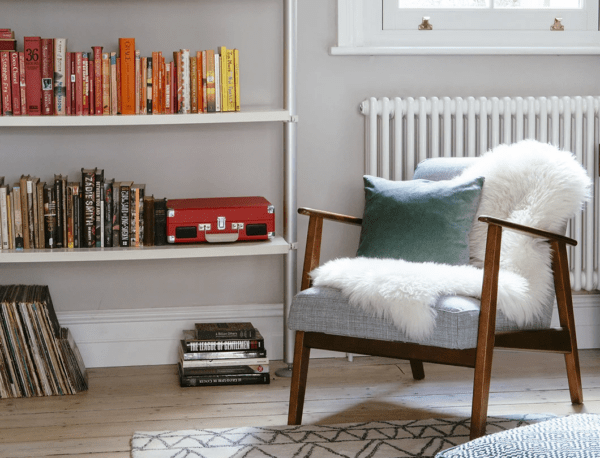
7 Tips for Your Spring Declutter, from the Experts

With Spring just around the corner, alongside the much-anticipated end of national lockdown, it’s the perfect time to start your spring cleaning and organise your home.
In pursuit of a more polished abode (and the peace of mind that comes with it), we’ve partnered with the experts at Made.com who have put together seven top decluttering tips to help homeowners freshen things up around the house and get organised.
1. Maximize Your Space

A spring declutter doesn’t mean you have to get rid of all your bits and bobs, it just may mean putting it out of sight. Buying multi-tasking furniture, such as beds with storage or a coffee table with a shelf or drawers, provides additional unseen spaces to store items, allowing open spaces to appear clear and clutter-free.
Go a step further and add additional shelving on the walls. Many fail to utilise the height of their rooms, meaning that knick-knacks are often all on the same level, making the space feel more crowded than it actually is. Storing belongings such as ornaments, standing picture frames, and vases on multi-level shelving is a great way to provide more storage in your room while adding to the aesthetics of your space.
2. Stay Organised

Decluttering can be a daunting task and that’s why so many of us put it off and feel the need for a “spring clean”. The best way to approach this is by planning the task prior to starting it.
For example, making a room-by-room declutter plan lasting over a set time period can help you approach the job with more purpose and clarity.
It will also help you make sure you have all the organisational aids needed to succeed. Do you need more shelving, trinket boxes, under-bed storage, or more coat hangers? Include the required items in your plan to ensure you set yourself up for success when it comes to sorting out that particular room on your list.
3. Colour Code

Colour coding/blocking is a fun way to improve the aesthetics of your home! Stacking and organising colours together across your living space allows it to appear more decorative and provides a fresh look for the upcoming spring months!
Although the clutter will remain, styling it gives the illusion of organisation, making it easier on the eyes. For example, colour blocking books is a great way to turn an overloaded bookcase into an attractive artistic feature.
4. Take Breaks
Taking breaks between decluttering can be useful. Sometimes a fresh eye in between sessions can help you approach your task with a clearer mind!
Decluttering can mean a lot of bending, lifting, breathing in dust and so on, quickly causing many to become tired and fed-up with the task at hand. Take 15-20 minute breaks every hour to help raise productivity levels and speed up the overall process.
5. Be Ruthless And If In Doubt, Kondo!
When decluttering, it’s important to break down why you keep what you keep. Too often than not people keep items for the sake of it. Maybe it was a gift a long time ago, or perhaps you have convinced yourself that you may use it in the future. The truth is, many of these items wouldn’t be missed if they were gone.
To differentiate between what to keep and what to throw away ask yourself three simple questions.
- Does it spark joy?
- Why do you need it?
- Will you notice it gone?
This should give you a clear insight as to whether you should keep, sell, donate, recycle or simply throw away.
If you are on the fence about some items, store them in a box for one month. If you find yourself reaching into the box to use the item then it stays, if at the end of the month those items have done nothing more than gather dust, it is time to let them go.
6. Shop And Drop!
The shop and drop technique is a method where you get rid of one thing for every new item that comes into your home. For example, for every new piece of clothing you purchase, select a piece to donate.
Getting into the habit of giving things away will help you avoid building up clutter in your home in the first place, meaning less time is spent on the task in the future.
7. The Hanger Method

The hanger method involves removing items from your wardrobe that haven’t been taken off the hanger within a set period of time. The trick to doing this is to have all hangers facing the same way hooked over the bar to start with. Every time you wear something and put it back on the hanger, you flip the hanger in the opposite direction. When the time period you set is over. Any hanger you haven’t flipped over can be donated.
You can also create more space in your wardrobe by putting different seasonal clothing away in storage, either under the bed, in the airing cupboard, or even in the attic if sealed. Doing this will leave you with more room to neatly hang and have access to the clothes you need for the current season, ensuring there is no need for the dreaded chairdrobe.
















































